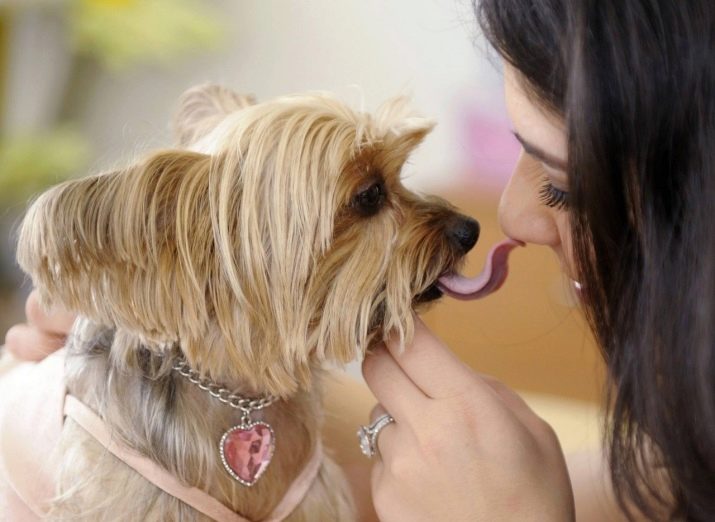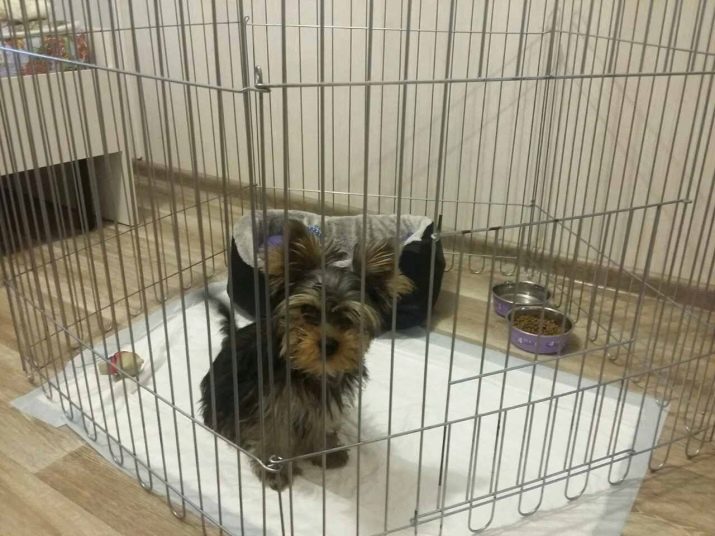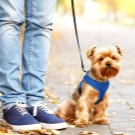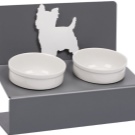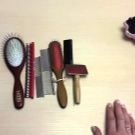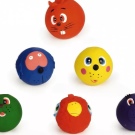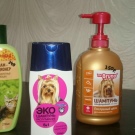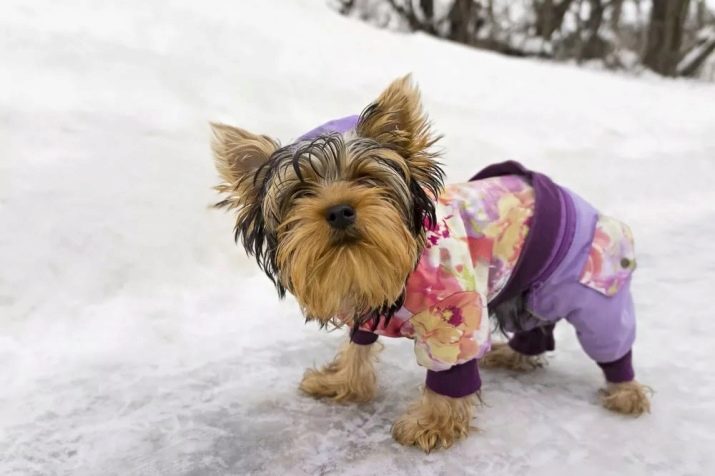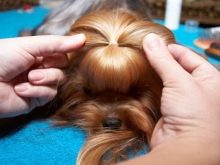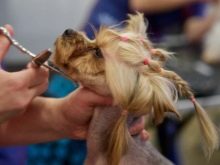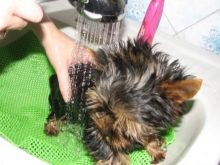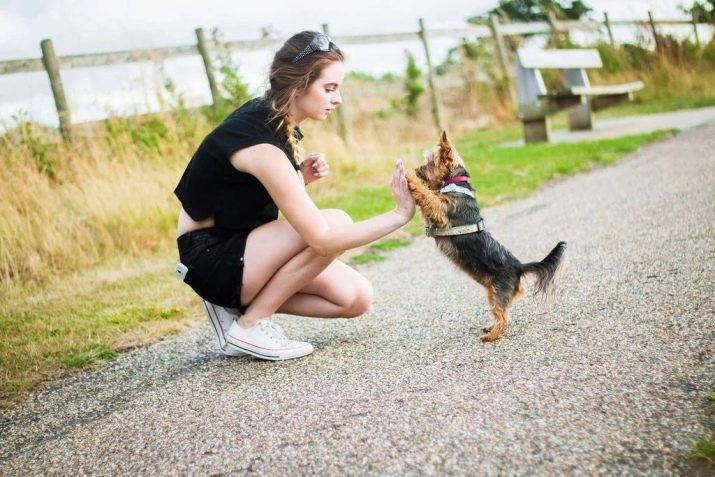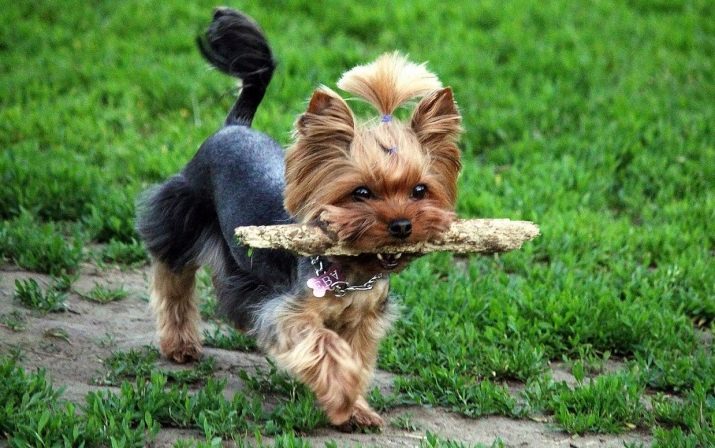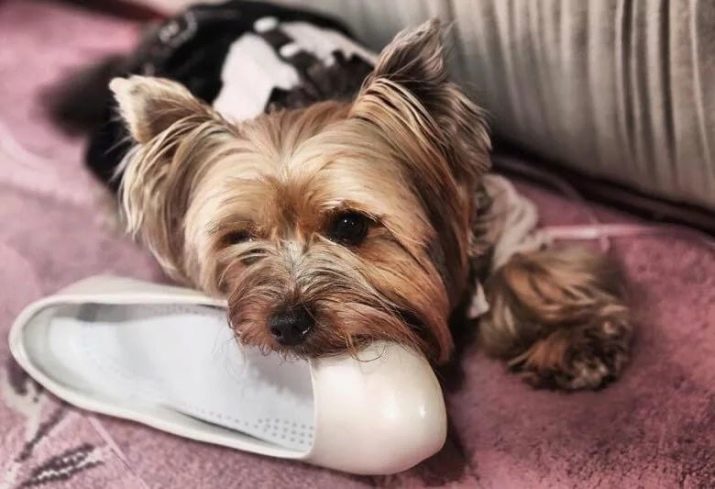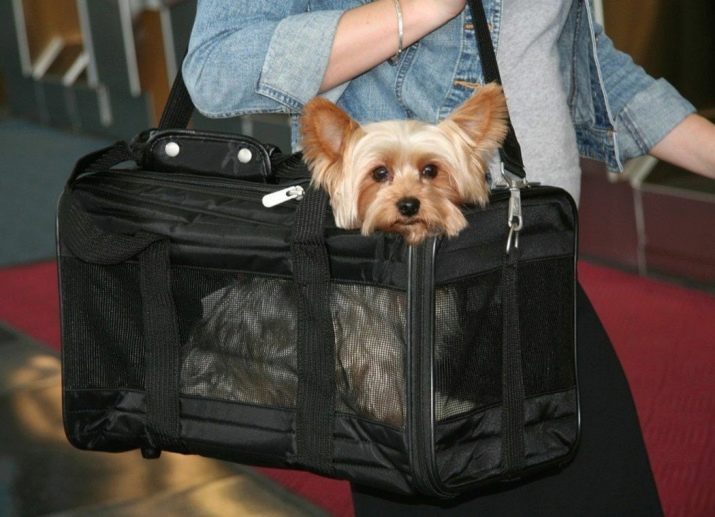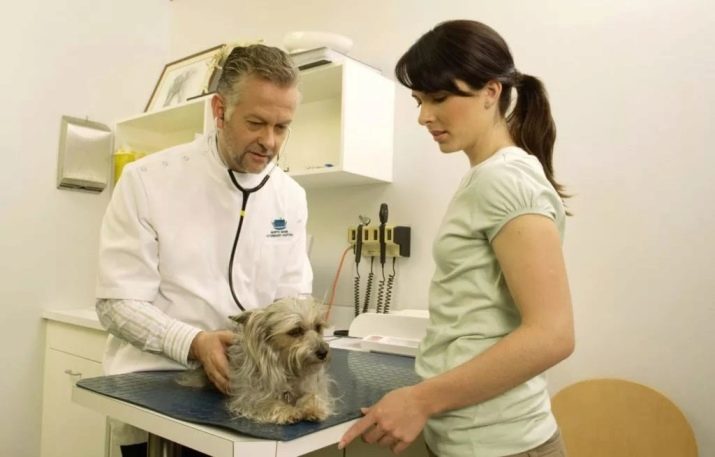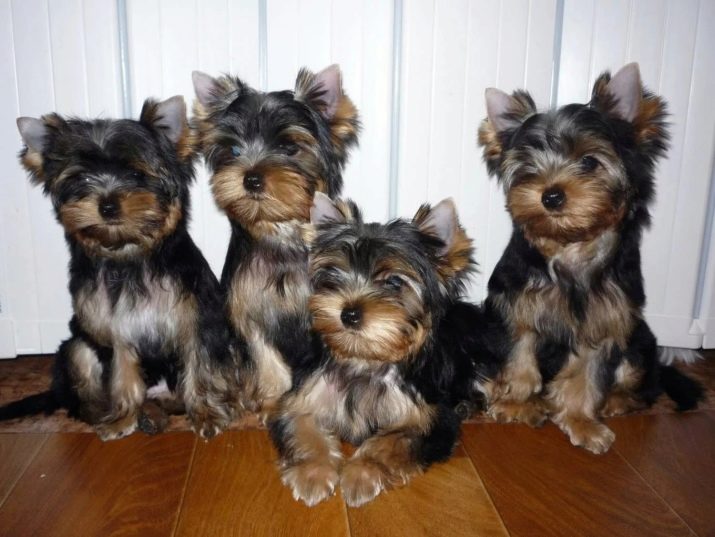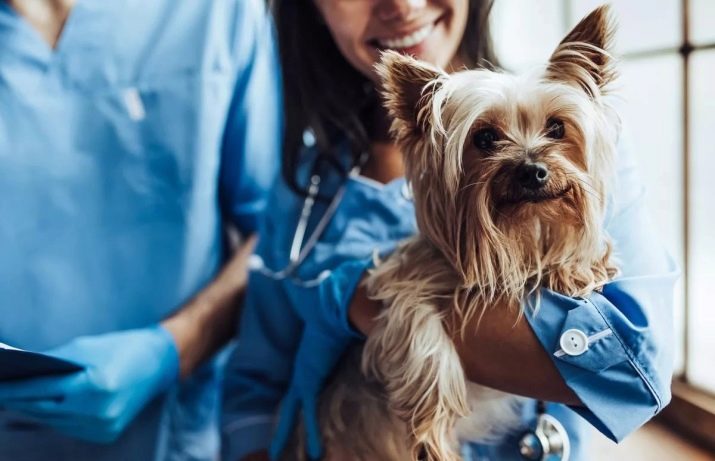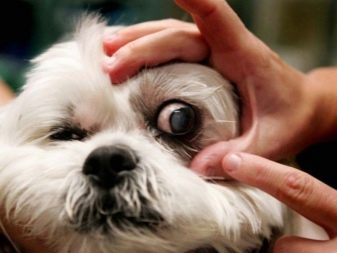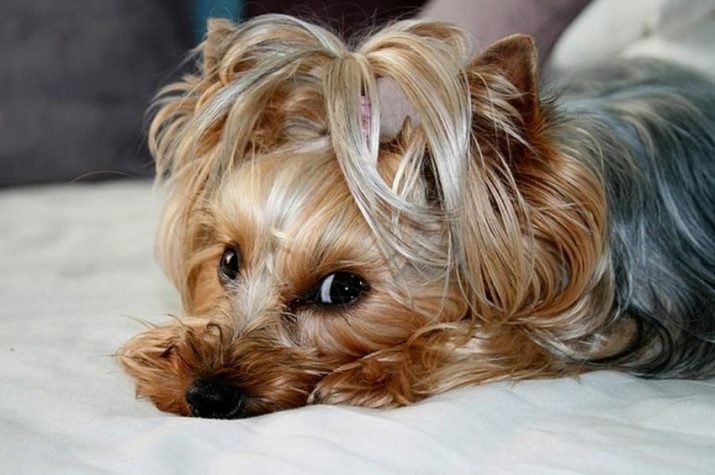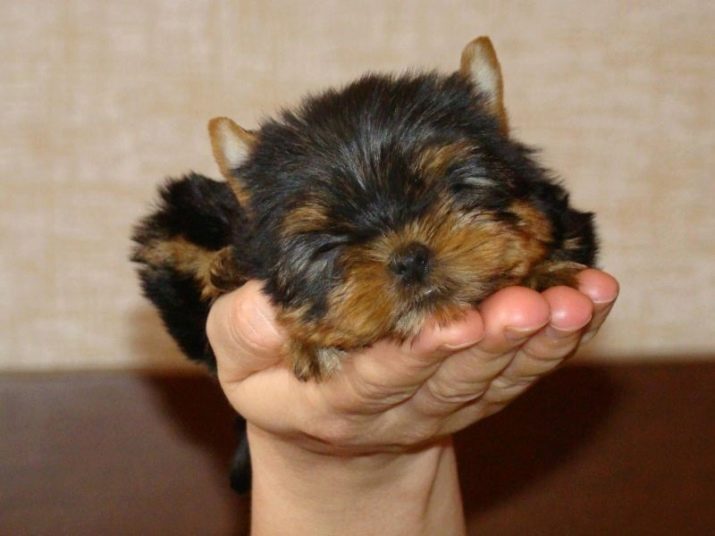It seems difficult to find a dog sweeter than a Yorkshire terrier. For this they love them: cute, funny, obedient doggie. But the appearance of York, making it look like a toy, does not negate the fact that it is a dog. And she needs not only care and care, but also an appropriate upbringing.
What is needed for the content?
York puppies are fragile creatures. When a baby grows up, it rarely weighs more than 3 kg. Yorkshire terriers live an average of 13 years. These are friendly dogs that make good friendship with people and animals. That is why even jealous cats often show condescension to Yorkies. The common expression "puppy friendliness" is as well suited to the Yorkshire.
The characteristics of the breed are such that these little doggies are ready to make friends, play, share all the joys with their masters. Even at 2 months, they are quite reasonable: sometimes sly people check the hosts for “strength”, but in general they are amenable to training.
Delicate pet care is a must. Due to their size, they are subject to various injuries. In addition, they do not tolerate loneliness, and separation from the owner is painful for them. Mini-york bones are fragile, as are joints, so if a dog lives in an apartment where there are small children, the first thing you need to remember is caution. Jumping and falling are dangerous for kids: an open balcony and a staircase are a direct threat.
Important! From birth, you need to follow the pet: especially carefully during a walk, because large dogs can harm it.
For a puppy will have to purchase the following items:
- a small aviary - it will be his personal, cozy place in the home;
- couch;
- carrying bag;
- collar with a leash;
- bowls (2 pieces);
- heavy, ceramic troughs and drinkers;
- latex toys made of lived - balls and various tweeters;
- special bathing cosmetics;
- terry towel;
- combs - metal with a durable handle and quickened rounded teeth, as well as massage brushes;
- papilotki on elastics;
- scissors for cutting hair on the ears and between the fingers;
- nail file;
- clothes;
- accessories for "hairstyles".
The dog itself is unpretentious to home conditions, it will be good in the apartment, and in a private house.
But she cannot live on the street, as the breed is decorative-room: the dog does not have an undercoat, it cannot physically live outside the house, it will just freeze. Moreover, both girls and boys of this breed are “great sissies”. So, they need to walk in special overalls, if the weather is cool.
Care of appearance
York's pride is a long and beautiful coat that needs to be carefully looked after. First of all, it needs to be combed with special combs. Almost all owners make pet haircuts and not at home, but in the salon. But the daily care of the Yorkshire terrier hair is carried out at home: comb, do not let it get dirty, gather in mats.
The basic rules of care are as follows:
- every morning, slaughter wool on the face of the animal to form a bang of top notes; in the evening, rezinochku removed, and braid pigtail for the night for the convenience of the baby;
- The first haircut is done by the groomer, perhaps, then the owner himself learns how to cut the baby, but for the first time reduce the dog to a specialist; up to 7–8 months, Yorkies do not need a model haircut, only hygienic, and it is necessary to update the model haircut every 2-3 months, but if the dog is a participant in exhibitions, it may be more often;
- bathe the baby properly in the bath and be sure to use a good shampoo and conditioner (buy at the pet store); you can sometimes make masks for wool, after which the hair becomes silky and soft;
- claws saw the baby once a month, sometimes they are clipped with special tweezers;
- Behind the ears also need constant care - they should be cleaned weekly;
- teeth of Yorkies are brushed and pasta: these dogs can suffer from tartar, therefore cleaning is obligatory;
- watch the eyes of yorks - there can be no purulent discharges in them.
Important! The dog is naturally clean. It is easy to teach her to the tray or diaper, she can buy a cat toilet, she will adapt to it well.
Upbringing
The process of training Yorkies can be called fascinating and creative. Those owners are wrong that they believe that dogs of such decorative breeds do not need to be raised. Every dog must be trained and educated. You should pay attention to the following basic rules of education:
- the dog must trust you - for this, always keep your promises, be consistent, do not change the requirements, pay attention to the dog every day;
- classes with the baby should be systematic;
- punish and encourage the baby in a timely manner - any deferred case does not make sense;
- start with simple commands and skills;
- consider the temperament of the baby, do not "break" it.
Physical penalties for and mistreatment of York are unacceptable. Bans should be strict but calm. He feels the owner’s indignation only by his strict intonation - any hysterical action on the part of the owner only spoils the relationship between him and the dog. Very often the owners make the so-called pedagogical errors. They are trying in one lesson to accommodate everything that they want to see from the dog. She just does not understand what you want from her, is lost, than only angry owner. But one lesson - one skill, practice it calmly, without haste.
The basis of education should be the gameplay. This is not a service breed, but a decorative one, so do not demand high intellectual skills from it. At the same time do not allow permissiveness: any innocent pranks that at first can be touched will, after all, grow into real disobedience and disorderly conduct. Do not let even the puppy baby do a little dirty trick. If the kid has become accustomed since childhood that the owner does not show perseverance, it will be impossible to retrain him as an adult.
Always require the dog to perform a command.
Having come home, you can see how a puppy tore your shoes into your absence. Many owners are surprised, but decide that they will hold an "educational conversation" after, and now you need to do household chores. But deferred conversation is devoid of any educational sense. It is necessary to immediately make it clear that you are indignant and indicate what kind of reason this anger is caused.
Walking
As already mentioned, the Yorkies are very clean. They are easily accustomed to the tray, so the dogs do not need walking as a means to solve their delicate issues. But walks are required. The babies also need fresh air, like all living things. They need to frolic on the grass, so try every walk, at least for a while, to pull the baby off your hands. When you have vaccinated a dog, wait 1.5–2 weeks from the moment of vaccination, and then you can go for a walk.
The first walks for a puppy should not be tiresome. They are informational: it is important for the baby to get comfortable in an unfamiliar environment. At first, he may be a little scared, but then begins to show curiosity - cheer him up, it is important to him the approval of the owner. Physical activity in a quiet pace, slow walks - that's what suits Yorks. Try to walk in quiet places, on not very noisy areas, this kid is easy to frighten. Since the dog has no thick undercoat, he needs special clothes for walking. On the paws, you can wear shoes so that the gentle pads of the paws are not injured.
In severe frost, try not to walk York: it will freeze. It is recommended to adhere to the regime - it is important for the education of the dog. The kid is comfortable because its size allows you to take a dog even on distant trips. Need a carrying bag and a leash with a collar, the rest is secondary.
Since the dog is friendly, she is tied to the owner, will patiently and without special objection follow him.
Health care
If you take care of the health of York, he will live in your family for 14 years, or even 15–16 years. Even a minor problem should not be ignored. Not only due to illness, but also prophylactically you need to drive the dog to the vet. The most frequent diseases of York include the following:
- dislocations of the kneecaps;
- liver disease;
- inflammatory process in the pancreas;
- low sugar;
- problems with gums and teeth;
- high sensitivity to drugs.
If the dog gets overweight, it will also be a threat to its health.
High physical exertion is also dangerous for dogs - it will be risky for the cardiovascular system of babies. Bones and joints are a sore spot for yorks. Very often, their diseases are associated with the genetic pathologies of animals. When purchasing a dog, you should check with the breeders what the parents of the baby have suffered with. And if the breeder says that the puppy's parents never hurt, it’s better to leave right away. This simply can not be: and if the seller is lying in this, dishonesty may concern other characteristics of the puppy.
It is necessary to consider diseases of the bones and joints, which are subject to York.
- Ataxia. This is a hereditary ailment that leads to muscle weakness. Any muscle group under threat. To date, there is no effective treatment for this disease.
- Aseptic necrosis. The disease affects the hip joint, often the disease develops up to a year. When the foot is extended, the baby may limp, he is in pain. In this case, only the operation will help.
- Osteoarthritis. So called degenerative deformations of cartilage tissue. The joint wears out faster than it has to be updated. Pain, lameness and destruction of the joints - that’s what is fraught with.
In addition to diseases and joints, babies can suffer from dental ailments. This can be blamed on the specific composition of dog saliva: plaque and tartar form in representatives of this breed very quickly. If you do not brush your dog's teeth, then by 5 years she may lose most of her teeth.
Very often, veterinarians call yorks "patients with stiff ears." They really fear drafts. Pain will make the dog restless, and you should always pay attention to it. Also, Yorkshire terriers can suffer from tearing, which is explained by the disruption of the lacrimal glands. Alas, a cataract also poses a danger to York, which can lead to blindness, complete or partial.
Yorks do not rarely suffer from indigestion, namely:
- if the dog has vomiting and diarrhea, call the vet - he will say in which case the dog needs to be led to the doctor, and when the owner himself is able to help the dog;
- do not confuse vomiting and strong belching - the latter is often characteristic of puppies with an excellent appetite, who often eat more than they need;
- short-term vomiting can also indicate overeating, rocking, but sometimes she also says that the dog has swallowed something inedible;
- almost all digestive disorders in York can be solved in one way - a healing diet.
Follow the health of York from the first day of his stay at home. A healthy puppy is strong, well-fed, cheerful, mobile, he has shiny hair and lively eyes. If he is curious, ready to play pranks, playful, it means that he is all right. Yorkshire Terrier will be your faithful friend. You should not expect from him those skills that can demonstrate a larger dog. But a decorative breed does not mean that it is too fragile and inept. Yorks are adaptive, they socialize very well, and in training they are able to prove themselves as ideal students.
If you only decide on the choice of a puppy, give preference to the one who is more active and healthy looking. Even with tiny sizes, he should have a strong build. The baby is 1.5–2 months active, agile, wants to play. A healthy puppy should have a shiny coat.Familiarize the family with the baby gradually, and teach small children to understand all the responsibility for the living being.
Important! Experts do not advise starting York in families where there are children under 5 years. The danger of not picking up children for the leprosy of dogs is very great.
On the care of the Jokshire Terrier, see below.



